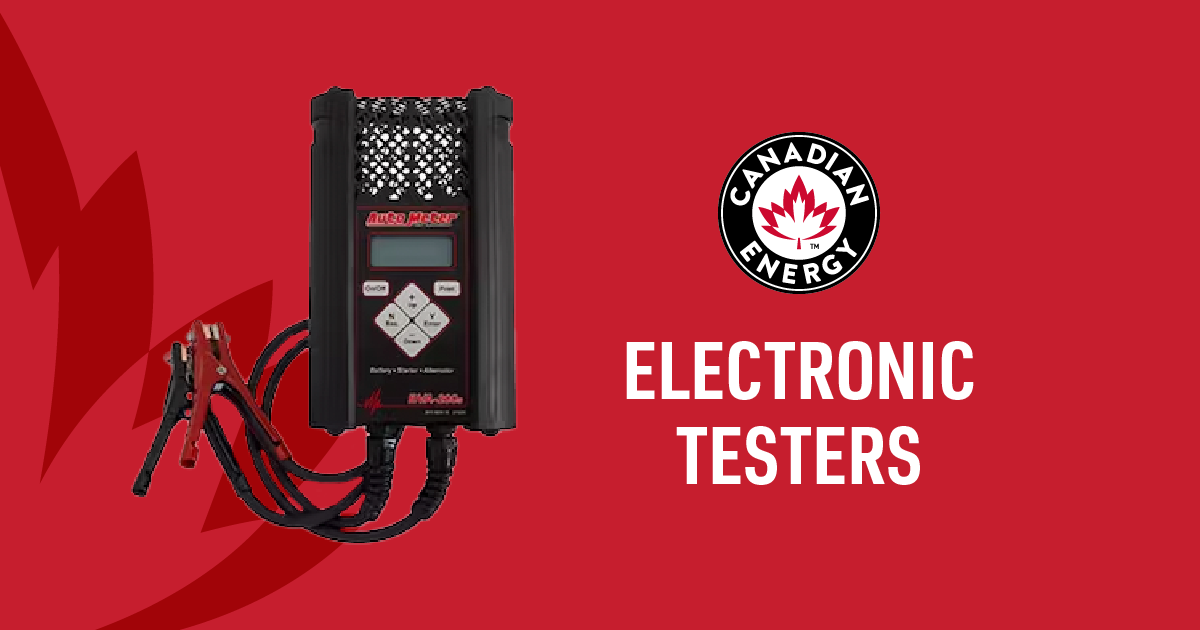Electronic Testers

Today’s subject is about electronic load testers for lead-acid starting batteries. There are many different types of electronic testers available on the market today.
Midtronics is a very popular brand. Snap-on is another. Most of the equipment manufacturers have some type of electronic load tester. And, the list goes on. So one of the advantages to electronic load testers is there's very little experience required, as you simply follow a step-by-step instruction on the tester. So before we load test a battery, we need to ensure that the terminals are clean on the battery. They need to be free of any corrosion so that we get a good connection and accurate test results.
We also need to ensure that we use the proper terminal adapters when load-testing side terminal batteries and Group 31 stud batteries. If we’re reusing a bolt in a side terminal battery, or if we're clamping onto the stainless steel stud on a Group 31 battery, we're going to get inaccurate test results. These testers measure resistance. And, if we’re testing on the bolt or the stud, there's resistance there. So, we’re going to get an inaccurate result. So, always remember we need to be clamped onto the lead. If that means using a lead adapter we need to get the proper adapters for getting an accurate test.
Next, we would need to determine what is the cold cranking amp manufacturer recommendation of the battery. So, according to BCI specifications, we need to load test the battery to half the rated cold cranking amp. We need to plug in the cold cranking amp or, depending on the tester, the cranking amp rating of the battery, so that the tester can give its recommendation.
If the tester doesn’t meet 80% of the manufacturer's recommendation or the number that we plug into there, it's going to fail the battery. So, we’re going see that we can actually play with the results. If we put in that a battery was 1000 cold cranking amp and it tested less than 800, it may say, “fail.” If we put in the parameter that the battery was 900 cold cranking amp and it tested 800, it’s going to give it a pass. There can still be a little bit of interpretation but essentially we want to plug that number into the tester.
So, to proceed with testing, we want to input the parameters in. All testers are different and they have different parameters in them. But 3 main parameters on the testers would be entering the cold cranking amp or cranking amp rating, entering the temperature rating of the battery because that’s going to affect its performance, and it'll quite often ask if the battery is in or out of the vehicle. It’ll also sometimes ask if it is a flooded, AGM, or spiral.
Once we’ve connected the tester and input the parameters, the final step would be to press enter and the tester is going to do its thing, Usually in a matter of 15 to 30 seconds or less it’s going to give us a test result. So, the other thing that it may ask us to do is ask if the voltage is low on the battery and that’s very common when we see warranty batteries back because of all of the electrical loads. It may say, “charge battery and retest if necessary.” If this is the case, we’re going to have to recharge the battery for an appropriate period of time, depending on the voltage, depending on the charger. So, maybe up to 8 hours to get an accurate test result.
For more information on battery ratings and lead-acid batteries, visit us at cdnrg.com or check out our video on this subject here: https://goo.gl/Z9mr8K
